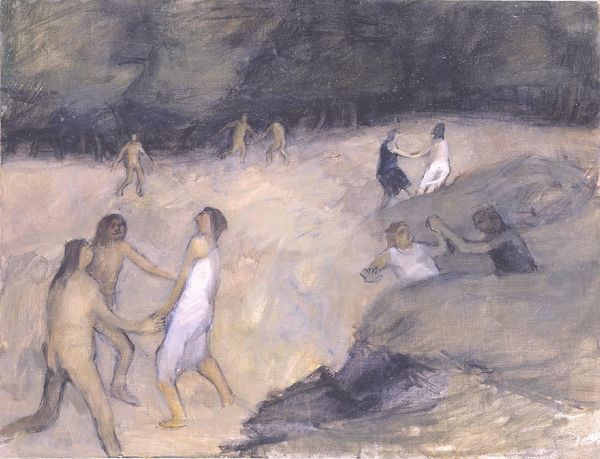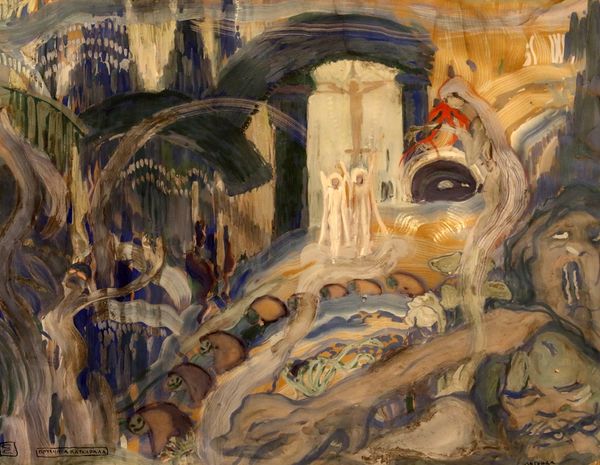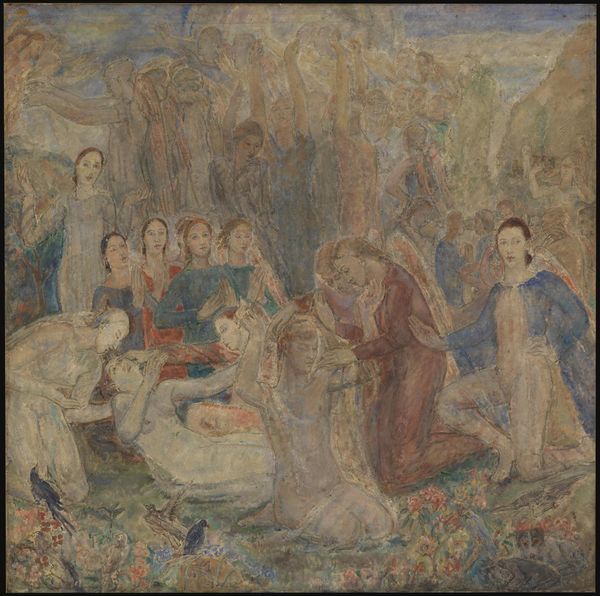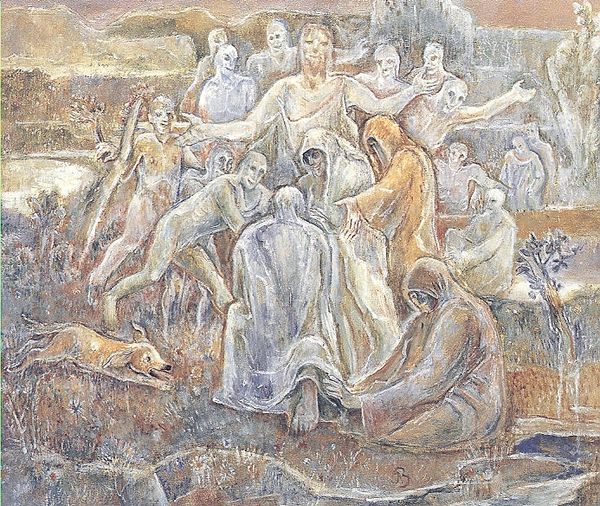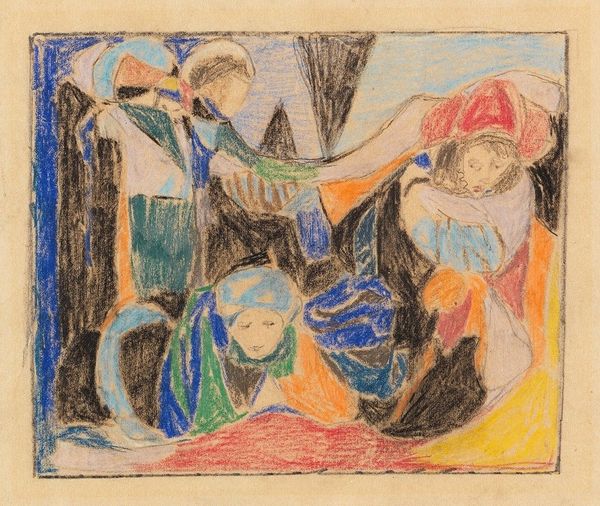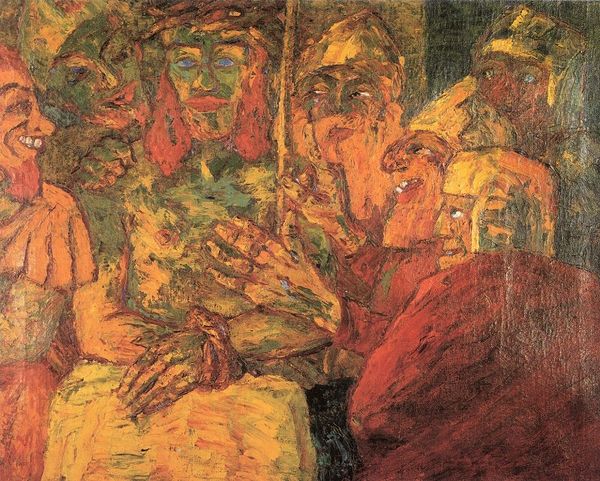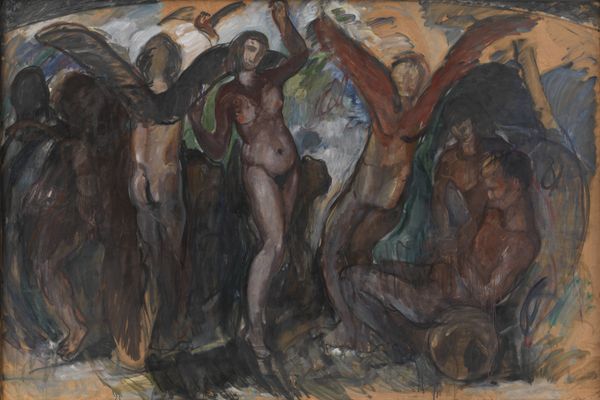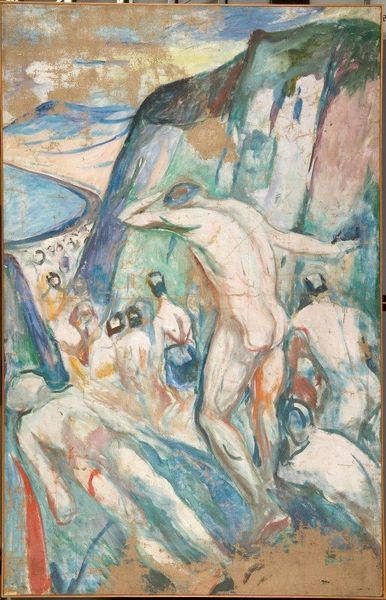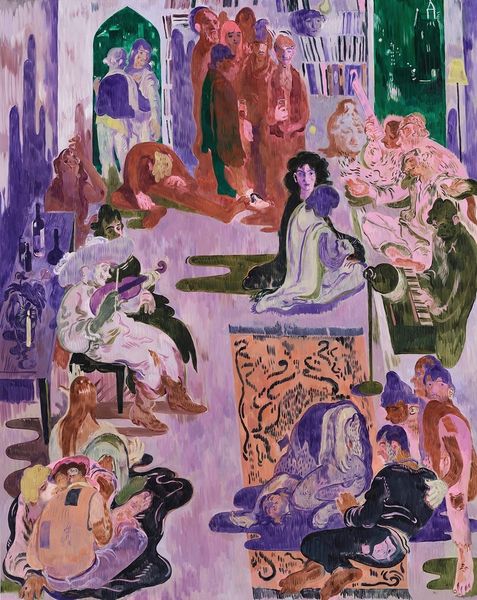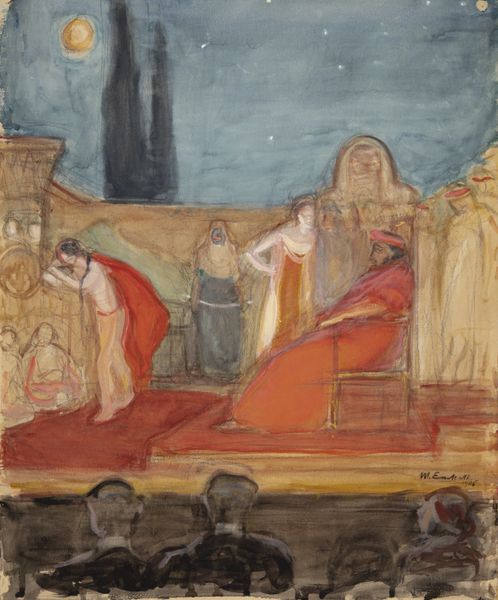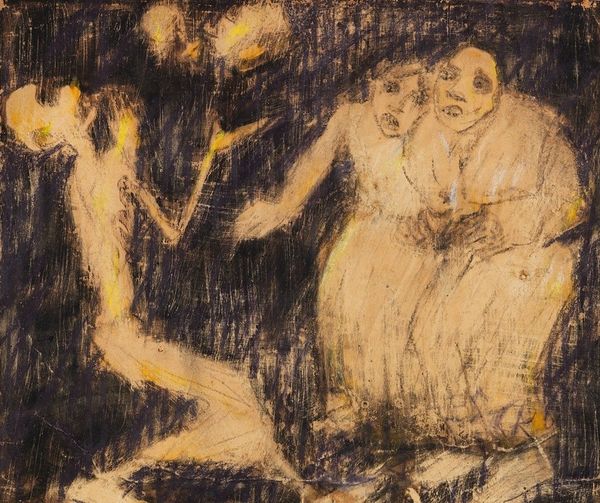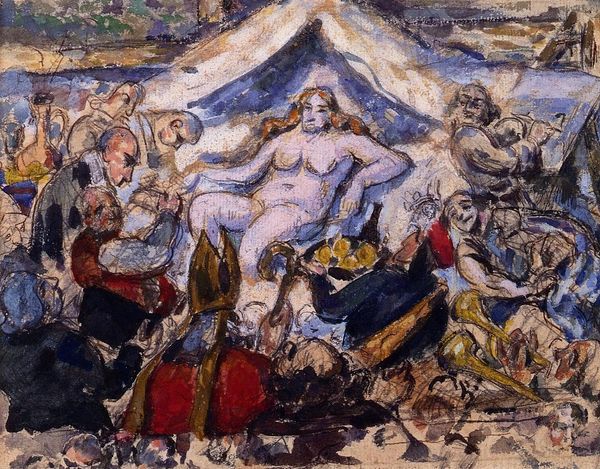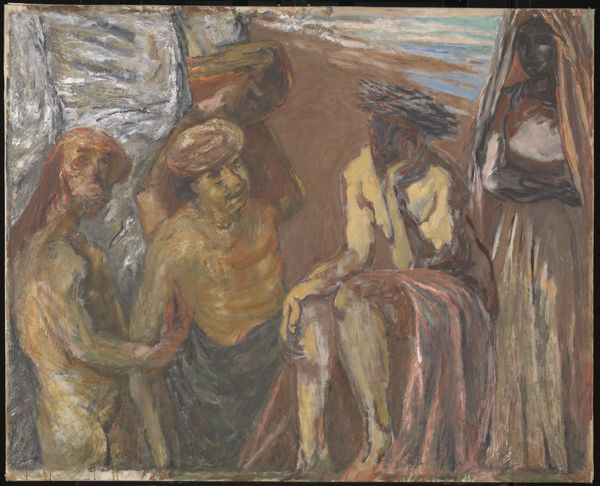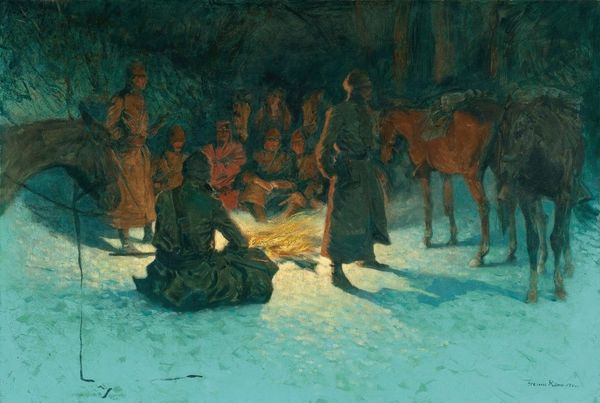
drawing, watercolor, ink
#
drawing
#
narrative-art
#
figuration
#
oil painting
#
watercolor
#
ink
#
symbolism
#
genre-painting
#
history-painting
#
watercolor
Copyright: Public Domain: Artvee
Editor: So, this is "Christ with the Lame," dating from around 1880-1886 by James Ensor, using ink, watercolor and drawing. It feels…unfinished, raw almost, with that almost feverish quality. What jumps out at you when you see it? Curator: The rawness you pick up on is spot on. Ensor often sought to express profound spiritual unrest and to shock the Bourgeoisie of his time, which is likely an underlying motivation for the medium and technique here. I sense in it a certain sympathy too. What do you think is happening here? Who are all these strange, spectral figures? Editor: Well, given the title, I assume Christ is healing someone…maybe the figure on the cot? Everyone else looks like onlookers, but they're so strangely rendered…sort of grotesque. Curator: Grotesque is a good word. Are they mocking or hopeful or curious or a mix of these and more? Perhaps a more direct route of thinking is needed. Does this historical moment mean something specific in Ensor’s place and time? Think about 19th-century Belgium. Editor: Hmm… Belgium at that time…rapid industrialization, social inequalities… maybe Ensor's commenting on societal ills, using a biblical scene as a mirror? Is it a metaphor for societal healing? Curator: Absolutely! It's like he’s peeling back the layers of polite society to expose something…almost diseased underneath. The vibrant yet sickly palette amplifies this unease. Notice how Christ’s light, the focus of our attention, contrasts sharply with the faces around him. The faces, sometimes reduced to skulls and death masks. Is this what humanity truly is? Editor: I do see how that reading shifts the whole piece for me. The healing isn't just physical, but spiritual or societal, even if tainted by our grim human reality. Curator: Precisely! And isn't that what great art does? It holds up a mirror, even a distorted one, so we might catch a glimpse of ourselves. It begs the question, what do you think the historical and cultural implications would have been for the audience who encountered Ensor’s art in Belgium? Editor: I guess it makes you consider not just the biblical scene, but how little humanity has progressed since that day. Curator: Beautifully put! It’s a message about Ensor's perception of Belgium. This artwork remains incredibly potent and complex, so very unsettling and affecting.
Comments
No comments
Be the first to comment and join the conversation on the ultimate creative platform.
